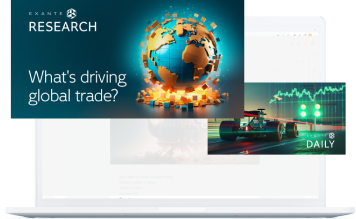By Renée Friedman, PhD
The week in summary:
Welcome to Macro Insights #19. This week markets remained extremely volatile as all eyes were on what was happening in Ukraine in terms of possible peace negotiations with Russia and the US Federal Reserve in terms of how fast they envisaged the depth and pace of rate hikes through 2022.
Markets lifted on Wednesday on the news that Ukraine and Russia made some progress on a tentative peace plan, but with the crisis ongoing, market volatility is likely to continue as the consequences for surging energy and commodity prices, continuing supply chain disruptions and an increasing cost of shipping, will impact demand and sentiment in the coming months. Yield curves, at least for 2 and 5 year bonds, are likely to continue to steepen although the threat of slowing growth further out may lead to some flattening at the long end.
On Wednesday the Fed, in a 9-1 vote, did as expected by raising the benchmark rate by 25 basis points to 0.50%. It projected its policy rate would hit a range between 1.75% and 2% by year's end which would imply a 25 basis point rise for at least 6 meetings. However, Fed Chairman Jerome Powell said that the Fed would act as quickly as needed. The more aggressive Fed stance showed that the rise in the rate of inflation and its persistence, which will likely be aggravated further by supply chain and trade disruptions caused by the Russian-Ukrainian crisis; inflation is expected to remain above the Fed’s 2% target, with its projected rate to be at 4.1% by the end of this year and dropping only to 2.3% through 2024. Economic growth is seen at 2.8% this year, a sharp drop from the 4.0% growth projected in December. Markets are now suggesting that there will be 7 rate hikes this year and that unemployment will be higher than they are forecasting. The Fed unemployment rate is seen dropping to 3.5% this year and staying at this level in 2023, but is projected to rise slightly to 3.6% in 2024. However, market analysts are suggesting that the Fed is actually facing a stagflationary situation as it will prove quite difficult to raise rates without it increasing the unemployment rate. Chair Powell said the US economy is “very strong” and can handle monetary tightening. The latest data on the tightness of the employment market, with iInitial claims for state unemployment benefits decreasing 15,000 to a seasonally adjusted 214,000, seems to be supportive of his view for now. The Fed said it would begin allowing its $8.9 trillion balance sheet to shrink at a “coming meeting”. Chair Powell said that Fed policymakers have made "excellent progress" on their plan to reduce the balance sheet, and could finalise details at their next policy meeting in May.
With inflation soaring across the Eurozone, reaching 5.9% in February, ECB President Christine Lagarde said on Thursday 17 March, that it [the ECB] will be in no hurry to raise interest rates and any move will be gradual and come only “some time” after its bond buying programme ends. She said, “This maintains our traditional sequencing logic, but also gives us extra space if needed after we stop purchasing bonds and before we take the next step towards normalisation.” The ECB has said it needs to be certain that eurozone inflation, including core measures that exclude energy and food prices, stabilises at 2% before raising rates. The labour market does appear to be tightening, with the euro area’s job vacancy rate rising to 2.8% in Q4 21. However, this was prior to the rapid surge in energy and commodity prices which will impact demand and may hit employment numbers in coming months as these economies, which are highly dependent on imported energy supplies, are expected to slow. They will also be hit by shifting trade patterns and margin calls which are driving liquidity shortages in the commodities trading markets.
The Bank of England (BoE) also did, as expected, raise the key benchmark rate at its meeting on 16 March 2022. In an 8-1 vote, with Deputy Governor Jon Cunliffe voting for no change, the MPC increased the Bank Rate by 25 basis points, to 0.75%. The BoE said inflation now looked set to climb to around 8% in the second quarter, up from 7.25% previously. It warned the peak rate later this year could be “several percentage points higher” than estimated in February. Inflation has been running at more than twice the target rate (5.5% in January) and the latest data showed just how tight labour markets were becoming. The MPC said policy tightening “might be” appropriate in the coming months; this is a softening from last month’s statement, when they said such a move was “likely.” They also noted “there were risks on both sides of that judgement.”
The spike in inflation means the squeeze on household incomes in the UK will be “materially larger” than implied in February, the BOE said. It also warned that events in Ukraine will exacerbate global supply chain disruptions and have increased the uncertainty around the economic outlook significantly. It also noted the large increases in energy and other commodity prices including food prices will strengthen global inflationary pressures over coming months, while growth in economies that are net energy importers, including the United Kingdom, is likely to slow. In short, it does seem the BoE is trying to balance between the need to combat inflation and maintain price stability and the awareness that growth will be hit in coming months.
Things to look out for this coming week
- In Europe on Friday there is Eurozone labour cost data. On Monday is German PPI data. On Wednesday is Eurozone consumer confidence survey data.
- In the US on Monday is the Fed National Activity Index. On Tuesday is the Richmond Fed Manufacturing Survey. On Wednesday is new home sales data. Thursday there is a raft of data including continuing and initial jobless claims, housing starts and building permits data, capacity utilisation, industrial production numbers, and the Philadelphia Fed manufacturing survey.
- In the UK on Wednesday look out for CPI, PPI, RPI and PPI core data. The Chancellor of the Exchequer, Rishi Sunak, is due to give the new budget on Wednesday including GDP growth estimates, spending and borrowing forecasts. Any new tax changes will also be introduced.
On Monday is the People’s Bank of China (PBoC) interest rate decision. The PBoC has been concerned by the growth outlook and the recent closures in China, as part of its zero tolerance policy, are likely to weigh on their decision.
What to do in a world of geo-political shocks
We are not even through the first quarter of 2022 and we’ve entered a risk–off mode. The past few weeks have brought about a changing power dynamic between the US, EU, Russia and China. There is also the growing threat of non-state actors in complicating the power balance between them through cyber attacks which may affect government servers, large multinationals and banks and other financial institutions critical for business and government operations.
And we are still not over COVID; Asia is again threatening to lock down in response to rising rates there and Europe is again seeing spikes in cases. The Russian-Ukrainian crisis made clear that geopolitical risk can quickly become on the ground physical risk. Investors are now reconsidering other flashpoints such as North and South Korea following on from the 9 March South Korean election won by the conservative candidate Yoon Suk-yeol. There have also been renewed concerns over the dynamics in the South China Seas, the possibility of military conflict between Taiwan and China, the continuing crackdown on Hong Kong as the new leadership elections may be postponed yet again due to Covid, and the threat that the agreement to resurrect the Joint Comprehensive Plan of Action (JCPOA) the nuclear deal between Iran and world powers, may fail if the US doesn’t agree to the red lines Iran has drawn, leading to an escalation of regional tensions and the risk of conflict there.
The explosion in energy prices in Europe, with gas futures up about 100% compared to a year ago, and the surge in oil prices to over $100 per barrel, highlight, for many EU policymakers and investors, that the continued dependence on imported fossil fuels is not tenable. The recent events in UKraine have cemented a new nexus between the adaptation of ESG policies to accommodate near term climate change impacts while still investing in and using existing traditional fossil fuel technologies and resources to accelerate the energy translation. Europe can only import as much LNG as its current capacity allows. BloombergNEF has estimated that the market will need at least 3 years to ramp up supply and that to build renewables at a pace to meet the 2030 targets, requires tripling the installed wind and solar capacity. As noted by ECB board member Isabel Schnabel on Thursday, prices are likely to rise as the transition creates a huge investment need that is likely to fuel a persistent positive demand shock, which normally generates inflation. For investors this means that metals and minerals needed for renewable energy production and storage will be in greater demand and may lead to increased resource nationalism in many markets. Commodities prices are likely to remain high over the coming months; this is especially important for investors looking to balance the risks of any stagflationary impact on equities.
These changing geopolitical dynamics, along with the push by some governments to achieve self-sufficiency in strategic products, may further complicate matters. As noted by EY in its Geostrategic Outlook 2022, the sectors most likely to be affected are technology companies, manufacturers, automakers, life sciences companies and renewable energy companies. In the US, Congress appears to be solidifying its support for industrial policy legislation aimed at boosting US competitiveness in critical technologies, while the administration is pursuing a “Buy American” policy, and the SEC is increasing disclosure requirements for Chinese companies listing in the US. At a global level, continued disruptions to operations and logistics — driven by the Covid pandemic, cyber attacks and extreme weather events — are likely to further complicate global supply chains.
In short there is significant global potential for a cascade of financial and economic repercussions when long-simmering geopolitical conflicts boil over. The best investors can do is be informed of what these risks are and where they are to create their best hedging strategies; this will likely include diversifying away from sectors at risk, buying stocks not in the region at risk, and balancing currency exposures.
DISCLAIMER: While every effort has been made to verify the accuracy of this information, EXT Ltd. (hereafter known as “EXANTE”) cannot accept any responsibility or liability for reliance by any person on this publication or any of the information, opinions, or conclusions contained in this publication. The findings and views expressed in this publication do not necessarily reflect the views of EXANTE. Any action taken upon the information contained in this publication is strictly at your own risk. EXANTE will not be liable for any loss or damage in connection with this publication.
Dit artikel wordt u alleen ter informatie verstrekt en mag niet worden beschouwd als een aanbod of uitnodiging tot het kopen of verkopen van beleggingen of gerelateerde diensten waarnaar hier mogelijk wordt verwezen.






